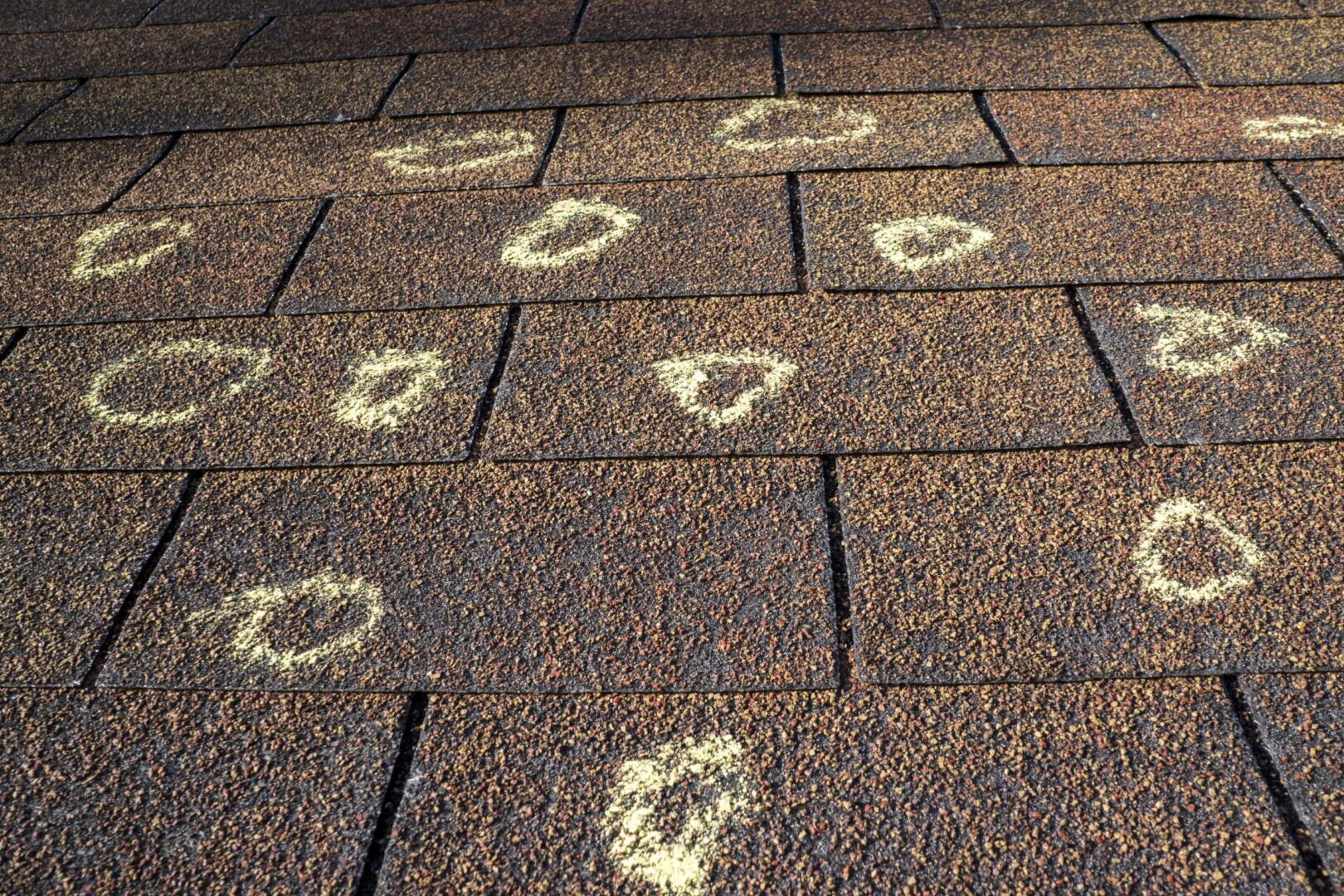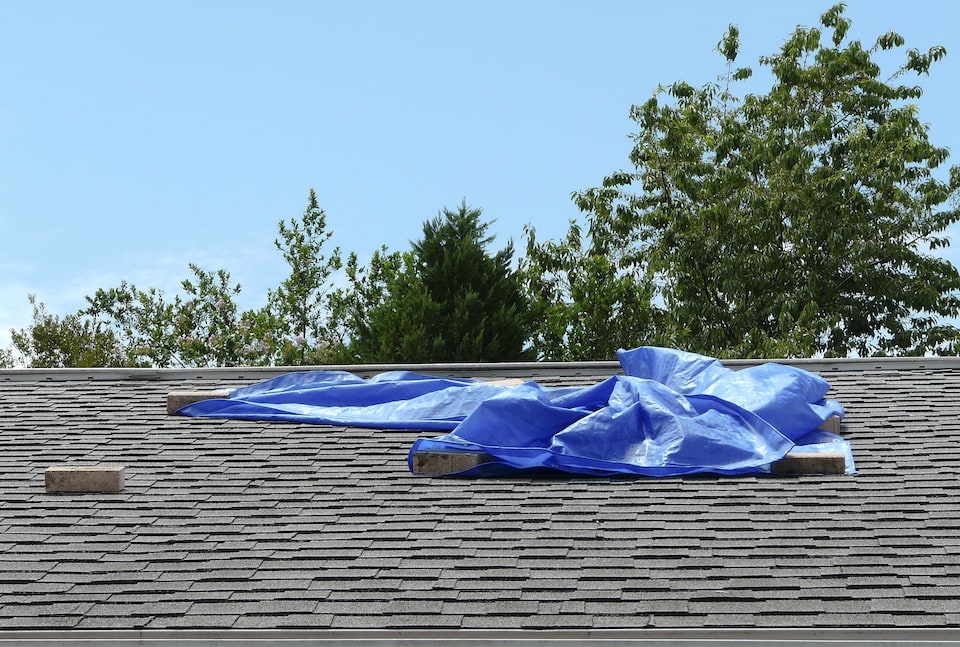Severe weather can come at a moment’s notice and cause everything from minor to irreparable damage to your home.
Depending on where you live in the country, you may experience everything from tornadoes and hurricanes to severe thunderstorms that bring strong wind and hail. However, roof storm damage isn’t always obvious, so it’s important to know what to look for and the first steps to take after a severe storm. We’ve come up with a checklist for homeowners to follow to ensure any roof damage their home suffers is taken care of right away.
What Can Cause Roof Storm Damage?
There doesn’t have to be a tornado for there to be substantial damage to your roof. Even the smallest dent in your shingles can cause a leak that leads to water damage in your home’s interior. Roof storm damage can happen from wind, hail, debris, and even heavy rains can cause roof storm damage.
Strong Winds
Thunderstorms bring with them not only rain, hail, and lightning but very high winds. The Beaufort Scale uses a range of 0 to 12 to designate wind speeds. The average storm falls between 6 and 10, ranging from a strong breeze of 25-31 mph winds to gale-force winds of 55-63 mph winds. These gusts of wind can do plenty of damage because they can easily blow underneath shingles, lift them, and bend them until they break. But even more so, strong winds carry debris and hail with it that can be slammed into your home’s roof at much greater speeds than if they were falling on their own.
Hail
Hail does not always accompany a rainstorm, but it can be incredibly damaging to homes, cars, and property when it does. And the hail doesn’t even need to be very large (golf-ball-sized hail is actually quite rare). Even small hail can cause dents on cars, siding, and shingles and break off shingle granules. The wind helps carry even the smallest hail at much higher speeds, making them that much more damaging.
Hail can damage your roof in a few ways: denting or cracking shingles, denting flashing, and knocking off the protective granules that are the top layer of your shingles. Those granules are essential to protecting the shingle and underlayment beneath. The moment those granules are broken loose is the moment your shingles become susceptible to water leaks and must be repaired. After a hail storm, to check for damage, you can look for broken shingles and differences in coloration on the shingles, which would indicate the loss of granules. If you notice small, round, dark spots on your shingles, chances are you’ve suffered hail damage, and you should call your local contractor right away.

Debris
Depending on how strong the storm winds were, you can end up with a slew of sticks and branches on your roof that can cause tons of damage to your shingles and vents. Even small branches can drag across your shingles during a storm, causing that granule loss and also peel up the edges of your shingles, breaking them loose from their seams.
In extremely severe storms with strong winds, you may even have large branches from overhanging trees (or the trees themselves) topple over onto your roof. This can cause extensive damage that requires a full roof replacement and perhaps repair of structural damage. One way to prevent this is to keep trees trimmed in your yard, especially those that hang over or close to your home.
Heavy Rain
And lastly, the heavy rains associated with thunderstorms can cause standing water on your roof or leak through the roof that has been damaged from any of the above elements. If your roof does seem to have standing water on it, there could be a few reasons why.
- Your roof is past its prime and no longer has the same integrity it once did, causing sagging and thus standing water.
- Your gutters are full of debris or don’t function properly. When your gutters and downspouts aren’t working properly or are full of debris, that water has nowhere to go, and so it sits on your roof.
To prevent standing water on your roof, you should first check your gutters and downspouts. Your roof and gutter system work as a cohesive unit to ensure your roof can withstand the elements and shed water quickly and efficiently. Gutter guards can help keep that debris out of your gutters and keep water moving freely.

What to do After a Severe Storm?
Knowing what to do after severe roof storm damage is critical to ensuring your safety, maintaining your home’s condition, and acting fast on repairs that need immediate attention. If you follow these key steps, you should be in good shape no matter how severe the storm or damage is.
1. Safety First
Make sure you and your family are safe and out of harm’s way. Large storms can sometimes cut power to your home or even large grids in the neighborhood. Once you can ensure your home is safe, you have power and water, and you can safely navigate around your property, then you can move on to the next steps. Also, never get up on your roof or do any risky maneuvers to assess any property damage—always call the professionals.
2. Visual Property Assessment
Although we recommend calling the pros for a roof assessment, you can still do your own visual inspection as you walk around your property. You should be able to see potential roof damage from the ground. As you walk around your property, look for damaged or missing shingles, cracked gutters, curling shingles or flashing, and other spots that show the potential for damage. Note those for when you call the contractor.

3. Tarp Your Roof
If you experience extensive damage that is at risk of causing water damage in your home, you will want to tarp it immediately while you wait for repairs. Most contractors can come and tarp it for you for a temporary fix. If you can access your attic, you could also place tarps and buckets on the attic floor to catch water so it doesn’t spread to your home’s interior as well.
4. Visual Interior Assessment
Your interior can also show signs of more severe damage that has caused water leaks in the attic. Leaks can look like water spots on your attic roof, attic floor, or even made their way to your upper floor ceilings. Look for wet spots or water stains in these areas, and you will be close to finding the leak. Of course, if a leak happens that quickly, you will want to remedy it very quickly. A tarp and buckets can help buy some time from further damage until a contractor can get to you.
5. Schedule a Roof Inspection
If you are certain you’ve suffered storm damage (or even if you aren’t sure), call your local roofing contractor to schedule a roof inspection. You can often get yourself a free inspection and estimate, and local contractors will be able to complete a full assessment of your roof damage and come up with a plan of action to get it remedied ASAP.

6. File an Insurance Claim
On your end, you can submit an insurance claim if you want to get some coverage for repairs. Contractors can help navigate the process and sometimes even work on your behalf to get you the most coverage possible for your roof repairs.
7. Implement Repairs
Once the claim is filed and you’ve received your roof inspection, repairs can begin. A roof can be repaired or even replaced within a day, so you can get back to your normal life while being worry-free.
8. Prevent Future Damage
After your roof repair, you can take the steps necessary to prevent further damage if it happens in the future. Regular roof maintenance, maintaining your gutter and downspouts, and ensuring a well-sealed attic can help mitigate risk for interior damage and water leaks in the future. Also, now you know how to handle this situation in the future and be ready with your contractor’s number and the supplies needed to handle a leak temporarily.
Get Your FREE Estimate From Apple Roofing!
If you’ve suffered roof damage, call Apple Roofing right away. We can take a peek at your roof and offer a FREE estimate, plus walk you through all the steps necessary to fix your roof and get it back in shape. Contact us today!


